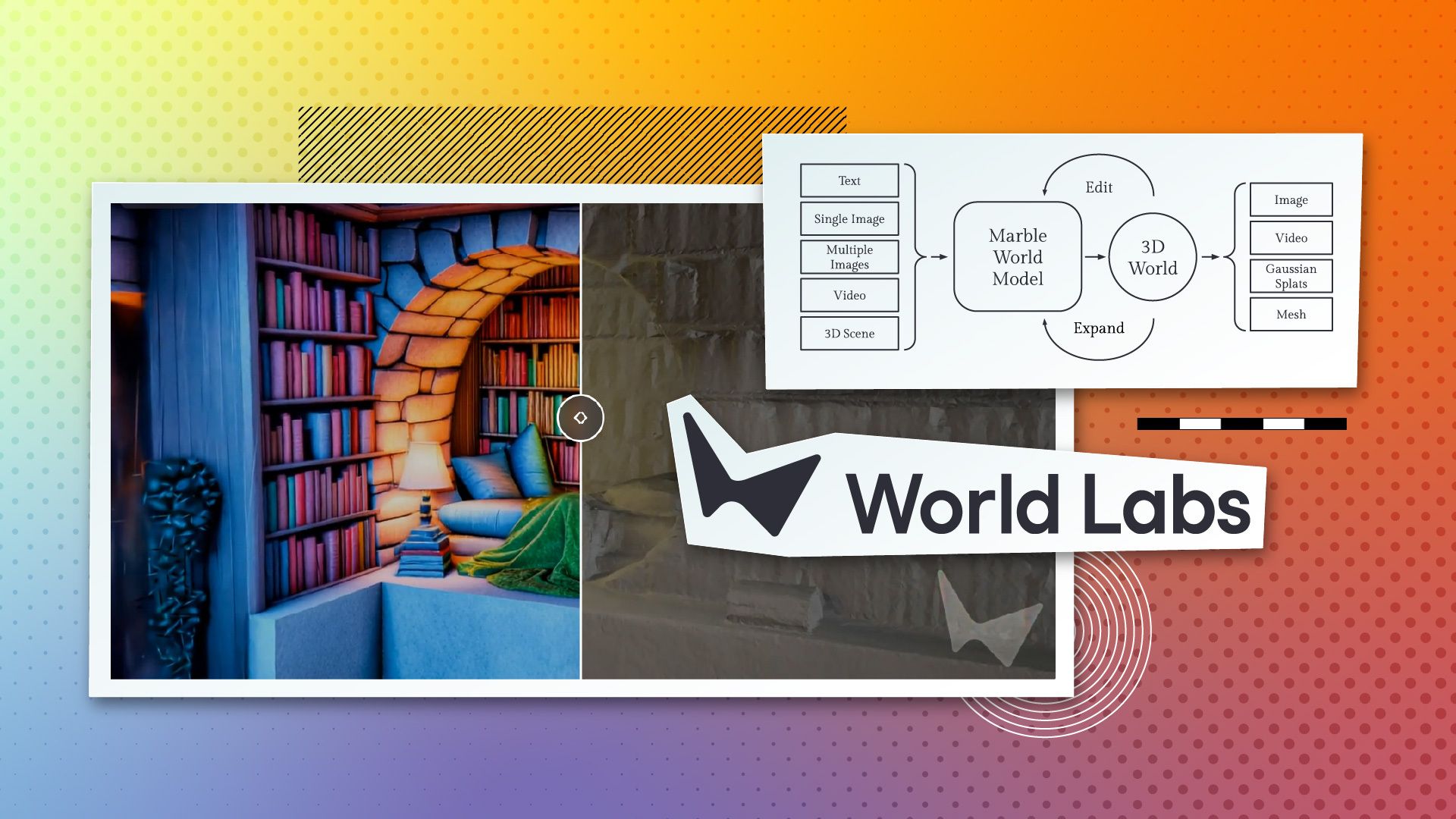WorldLabs launched Marble, a multimodal generative world model that creates interactive 3D environments from text, images, video, or custom 3D layouts. After two months of private beta, the platform is now publicly available, offering creators a toolset for building, editing, and exporting 3D worlds for VFX, previsualization, game design, and simulation workflows.
Marble's core capability is generating full 3D worlds from multiple input types—text prompts, single or multiple images, video, or coarse 3D layouts—then letting you iteratively edit, expand, and export them in production-ready formats.
What you can do:
Generate from multiple inputs - Create 3D worlds from text, single images, multi-image sets, video clips, or basic 3D layouts. Multi-image prompting lets you control how generated worlds look from different angles, or combine photos of real locations into explorable 3D spaces.
Edit interactively - Remove objects, swap elements, change visual style, or restructure entire sections of generated worlds using AI-native editing tools. Edits can be small (touch up a corner) or drastic (turn a dining hall into a theater with seating).
Chisel mode for 3D sculpting - An experimental tool that separates structure from style. Lay out coarse 3D geometry using boxes, planes, or imported assets, then apply text prompts to generate detailed worlds that match your spatial layout while following the described aesthetic.
Export for production - Output as Gaussian splats (highest fidelity), triangle meshes (collider or high-quality), or pixel-accurate videos. Enhanced video export can clean artifacts and add dynamic motion like smoke, flames, or flowing water while maintaining camera control.
Expand and compose - Select regions of generated worlds to expand for more detail or scale, or compose multiple worlds into larger environments using Marble's composer mode.
WorldLabs also launched Marble Labs, a community hub with case studies, tutorials, and workflows covering applications in filmmaking, interactive content, robotics simulation, and design. The platform is live now at marble.worldlabs.ai.
For previsualization and virtual production teams, Marble's export options address the typical "last mile" problem with generative 3D—getting AI-generated content into actual pipelines. Gaussian splats work with their open-source Spark renderer integrated with THREE.js, while mesh exports fit standard VFX and game engine workflows. The ability to shoot precise camera moves through generated environments and export them as video could compress concept development timelines significantly.
The open question is how well these outputs hold up under production scrutiny—detail consistency, lighting control, and whether the editing tools provide enough precision for professional-grade work. WorldLabs positions this as a step toward "spatial intelligence" with future plans for interactivity that would let humans and agents interact with generated worlds in real time.


